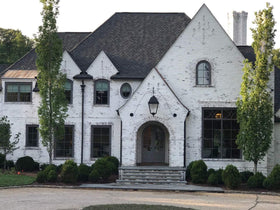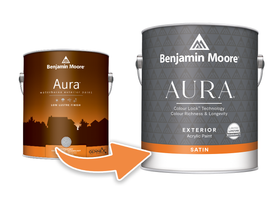
What’s So Awesome About Grasscloth Wallpaper?
Wallpaper is all about being what paint can never be, from intricate patterns to varying textures a paint brush can simply never do. And while paint can be made from a variety of materials, none are as easily noticeable and practical for decorators and designers as wallpaper. Vinyl wallpaper has become the mainstay of the industry for its durability and dynamic colours, but new technologies have seen a resurgence in a classic wallpaper material: grasscloth.
Grasscloth wallpaper has come and gone roughly every twenty years since the fifties. People were a big fan of the material mid-century and loved it again in the glam of the seventies. It took a bit of a break in the eighties and nineties when vinyl was everybody’s go-to wallpaper before landing in the eco-craze of the early 2000s. Usually grasscloth played a supporting role to the rest of the room, but recent blends of material allow a farther range of colours, patterns, and even prints. Grasscloth wallpaper can now compete with the other materials while giving rooms a unique texture no other product can match.
So what exactly is grasscloth?
The wallpaper is made from actual grass fibres, sometime woven on looms, to create a strong, interwoven fabric. Sea grass, sisal, and jute are the most common plants used to make the product and come in various grains, from coarse to fine depending on your specific needs. Because the product is natural, rooms can have visible seams where the paper lines up, which is why some people shy away from grasscloth. But in the right hands, these seams can make a room go from bland to dynamic. And because they are made from all natural materials, usually with a bit of cotton to keep things all together, grasscloth wallpaper is one of the most sustainable and eco-friendly decisions anyone can make for what they put on their walls.
New technologies in dye also means this type of wallpaper is experiencing a bit of a renaissance when it comes to colours and patterns. Companies like Thibaut have taken to prints and designs on their grasscloth lines. Incorporating the original material itself into the design, like sea grass blossom patterns, are also becoming more common. With the water-based inks, the dying process also maintains the natural look of the wallpaper, and keeps that captivating uneven look.
Another benefit with grasscloth is the texture, something paint and other forms of wallpaper just simply cannot imitate. Textures change depending on the type of grass and the grain, which means even more choices for someone looking to add a bit of a different feel to a room.
Grasscloth wallpaper has come a long way since its heydays in the fifties and seventies, giving decorators even more options for their next projects. So the question isn’t really “Why do you need it?” It’s “Why wouldn’t you want it?”



